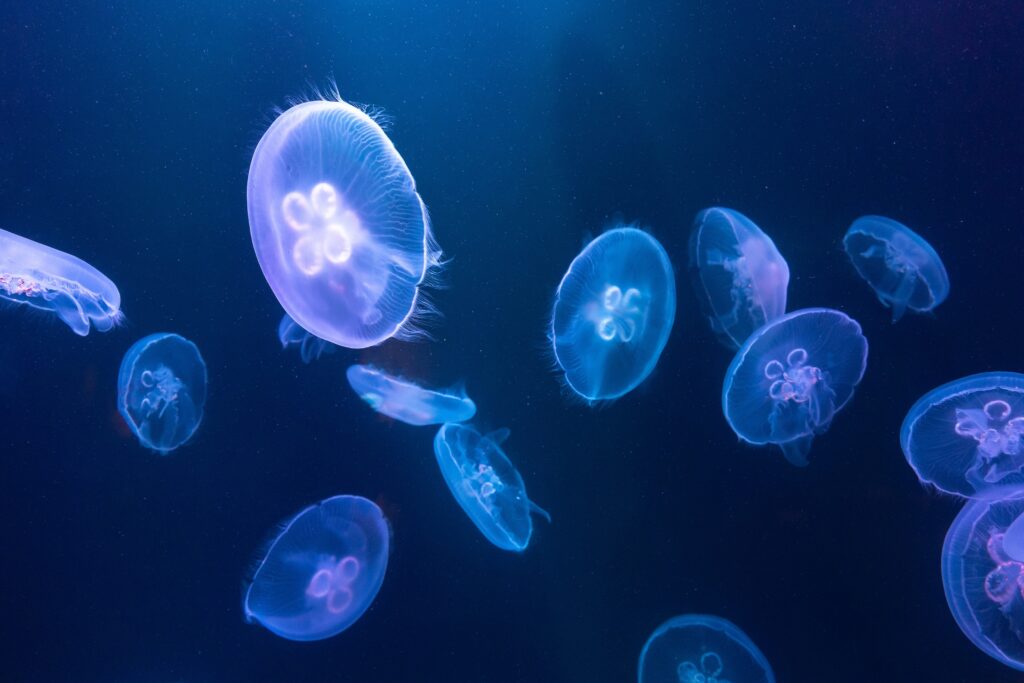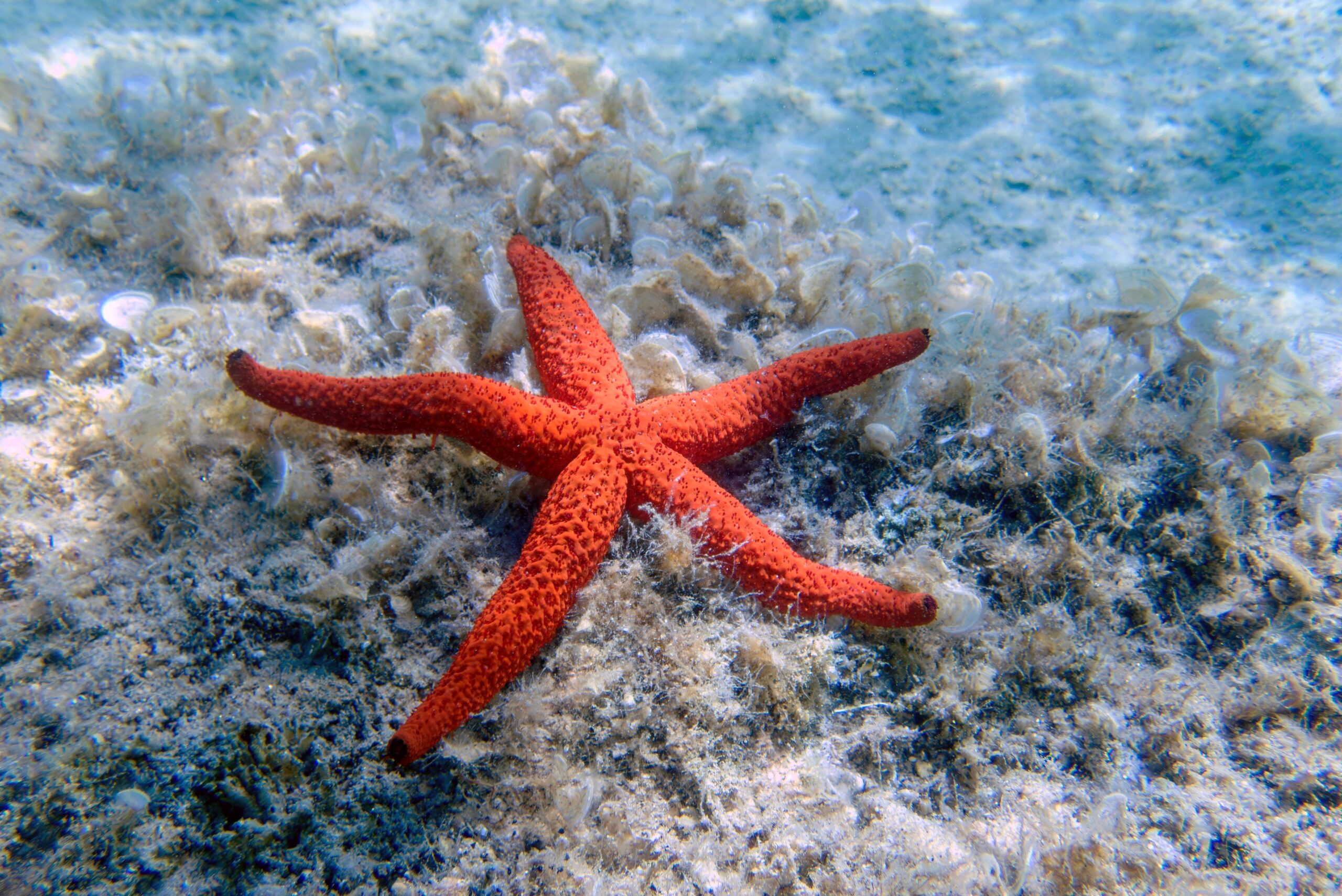Exploring nature’s weirdest survivors.
Brains get all the credit. They’re hailed as the control centre of life, the seat of consciousness, the difference between “just surviving” and actually knowing you’re alive. But nature, as usual, loves a plot twist. Meet the creatures that thrive without a brain—organisms that move, eat, reproduce, and even solve basic problems without anything resembling a grey matter blob. In this article, we’ll explore the surprisingly diverse world of brainless beings, and how they challenge our very definition of intelligence and life.
Outline
- Introduction
- What Does It Mean to Be “Brainless”?
- The Jellyfish: Pulsing Without Thought
- Sea Stars and Echinoderms: Nervous, but Not Neurotic
- The Sponge: Arguably the Original Freeloader
- Slime Moulds: The Smartest Blob in the Forest
- Flatworms: Headless Regeneration Champions
- Why Brains Aren’t Always Necessary
- What These Creatures Teach Us
- Final Thoughts
Introduction
We tend to think that life begins and ends with the brain. No brain? No thoughts. No thoughts? No life. Right?
Wrong.
Across Earth’s oceans, forests, and even your garden pond, creatures without brains have existed for hundreds of millions of years—and they’re doing just fine. Some of them even outperform brainy species in specific tasks.
It’s weird, it’s wild, and it makes you question everything you learned in biology class.
What Does It Mean to Be “Brainless”?
Let’s define our terms. When we say an animal is “brainless,” we mean it has:
- No centralised brain structure
- No cerebral cortex or grey matter
- May still have nerve nets, ganglia, or decentralised nervous systems
These creatures often rely on:
- Reflexes and pre-programmed responses
- Hormonal or chemical signalling
- Cellular memory and physical feedback loops
They’re not thinking—at least not in the way we are—but they’re interacting with the world in surprisingly complex ways.
The Jellyfish: Pulsing Without Thought
Jellyfish are the poster child of the brainless bunch. With no heart, no lungs, and no brain, they rely on a nerve net—a simple web of neurons spread through their body.
Key abilities:
- Sense light, temperature, and pressure
- Pulse rhythmically to swim
- React to stimuli (like prey or danger)
- Use stinging cells (cnidocytes) to catch food
And some jellyfish, like Turritopsis dohrnii, can even reverse ageing, returning to a polyp state after maturity. A brain clearly isn’t needed for longevity.

Sea Stars and Echinoderms: Nervous, but Not Neurotic
Sea stars (often called starfish, though they’re not fish) are part of the echinoderm family. They have no brain and no blood, yet manage to regenerate limbs and open clams with surprising skill.
How do they function?
- Each arm has a nerve ring and radial nerves
- Their tube feet respond to chemical and light cues
- Movement is coordinated by localised nerve activity, not centralised control
A sea star can lose an arm and regrow it from scratch, sometimes even forming a whole new starfish from a single limb.
The Sponge: Arguably the Original Freeloader
Sponges are among the simplest multicellular animals—and arguably the oldest, dating back over 600 million years. They have:
- No brain
- No nerves
- No digestive system
So how do they survive?
They filter-feed by pumping water through their porous bodies, extracting microscopic nutrients. They can respond to their environment—closing their pores or altering water flow—but it’s all done chemically and mechanically.
They’re the zen masters of the animal kingdom: no brain, no rush, no worries.
Slime Moulds: The Smartest Blob in the Forest
OK, slime moulds (especially Physarum polycephalum) are technically not animals—they’re protists. But they’re too fascinating to leave out.
Why they’re impressive:
- Can solve mazes
- “Remember” previous paths
- Optimise networks like underground rail systems
- Avoid noxious substances
All without a brain, nerves, or any kind of cognitive centre.
Scientists have even used slime moulds to model transport systems and test bio-computing. It’s a thinking creature without thoughts. A smart blob. A literal genius goo.
Flatworms: Headless Regeneration Champions
Flatworms (like planarians) do have simple brain-like structures, but here’s the twist: you can cut one in half—or into multiple pieces—and each piece can regrow into a complete flatworm, including a new brain.
This regenerative ability:
- Challenges the importance of centralised intelligence
- Suggests genetic and cellular memory is enough to “rebuild” complexity
- Has made flatworms a model organism in medical research
Imagine cutting your phone in half and it growing into two working phones. That’s the vibe.
Why Brains Aren’t Always Necessary
Brains are expensive—metabolically speaking. They consume a lot of energy and require complex systems to support.
For many organisms, especially:
- Sessile creatures (that don’t move)
- Animals in stable, simple environments
- Creatures that rely on basic reflexes
…it’s more efficient to rely on simpler systems: nerve nets, chemical cues, or physical structures.
These systems are:
- Slower but stable
- Less prone to failure
- Ideal for basic survival
In other words, not having a brain is often a design choice—and it works.
What These Creatures Teach Us
These brainless animals force us to reconsider what it means to be:
- Intelligent
- Alive
- Conscious
They challenge anthropocentric ideas—that our way of thinking is the only or “highest” form of intelligence. They show us that:
- Complexity isn’t always the goal
- Simplicity can be just as effective
- Life adapts in astonishing, creative ways
Some even argue that distributed intelligence (like in slime moulds) may be more resilient and efficient than centralised brains—raising intriguing questions for robotics and AI design.
Final Thoughts
Brains are brilliant, no doubt. But nature is full of reminders that you don’t need one to live well—or long. From jellyfish to slime moulds, these creatures have evolved to thrive without the burden of brainpower.
So the next time you forget your keys or say something daft, just remember: some of the world’s oldest and weirdest survivors don’t even have a brain to blame.
In the kingdom of the mindless, survival is still an art.








